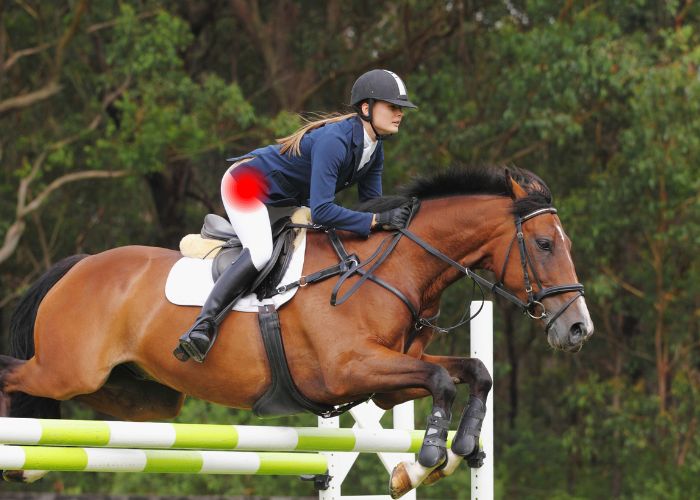What is pigmented villonodular synovitis (PVNS)?
The synovial membrane is a thin layer of tissue lining all of the joints in the body. This tissue plays a role in reducing friction with joint movement by secreting a thick viscous fluid into the joint space. On occasion, the synovial membrane can produce an excess amount of fluid that can lead to swelling of the lining known as synovitis. An abnormal tumor-like growth or resulting mass in the joint space can lead to painful movement of the joint, and, over time, lead to osteoarthritis or bone damage. This hip condition, known as pigmented villonodular synovitis (PVNS), is most prevalent in adults between 20 and 50 years of age. The majority of cases affect the knee joint, however any joint with a synovial membrane is susceptible.
Are there different types of PVNS – pigmented villonodular synovitis?
There are two types of PVNS: localized and diffuse.
- Localized, or nodular PVNS, is confined to one area of the hip joint and the tumor may involve the supporting tendons of the hip joint. The pain and inflammation with localized PVNS is often easier to treat as it involves only one area of the hip joint.
- Non-localized, or diffuse PVNS, affects the entire hip joint with extension outside and is more common than localized PVNS. This type is often more difficult to treat as it tends to be more aggressive and involve a complex array of symptoms.
Dr. Ronak Mukesh Patel, orthopedic hip specialist serving patients in Sugar Land, Pearland, and the Houston, Texas area, has the knowledge and understanding as well as substantial experience in treating patients who have experienced pigmented villonodular synovitis.
What are the symptoms of PVNS?
A common complaint of pigmented villonodular synovitis (PVNS) is mild to moderate hip pain that only affects one of the hip joints. This pain tends to worsen with movement and become more severe over time. Other common symptoms of PVNS can include:
- A “locking” or “catching” sensation in the affected hip joint
- Decreased range of motion of the affected hip
- Rapid inflammation in the joint space of the hip
- Hip instability or the feeling of the hip “giving way”
How is PVNS diagnosed?
A comprehensive medical history is obtained by Dr. Patel with a focus on previous hip injuries or other hip conditions. A thorough physical examination is then performed to assess the hip for pain and any other joint deficiencies. Magnetic resonance imaging (MRI) is the best diagnostic tool to analyze the extent of synovitis and rule out any damage to the surrounding hip joint structures. In the event of a hip injury, Dr. Patel may request an x-ray to identify if any bone-related damage occurred. Occasionally, a surgical biopsy of the mass can be performed and sent to pathology for an official diagnosis.
What is the treatment for PVNS – pigmented villonodular synovitis?
Because there are currently no effective non-surgical treatment measures for pigmented villonodular synovitis (PVNS), surgical intervention is the only treatment method available. Dr. Patel performs a synovectomy to remove the inflamed synovial membrane lining. This can often be accomplished with a minimally invasive arthroscopic technique involving a small camera (arthroscope) and specialized surgical instruments. However, depending on the extent of the synovitis, an open surgical approach may be needed for Dr. Patel to view the entire hip joint while conducting the necessary revisions. Complex and more extensive disease cases may require radiation.
Hip PVNS Specialist

Pigmented Villonodular Synovitis or PVNS is an uncommon and painful joint disease that can affect many joints, including the hip. PVNS can cause rapid swelling of the hip joint, as well as moderate pain which worsens with movement. Patients with PVNS can also experience a decrease in range of motion of the hip. PVNS hip specialist, Doctor Ronak Mukesh Patel, provides diagnosis as well as surgical and nonsurgical treatment options for patients in Houston, Sugar Land, and Pearland, TX who are experiencing hip pain and symptoms associated with pigmented villonodular synovitis. Contact Dr. Patel’s team today!








